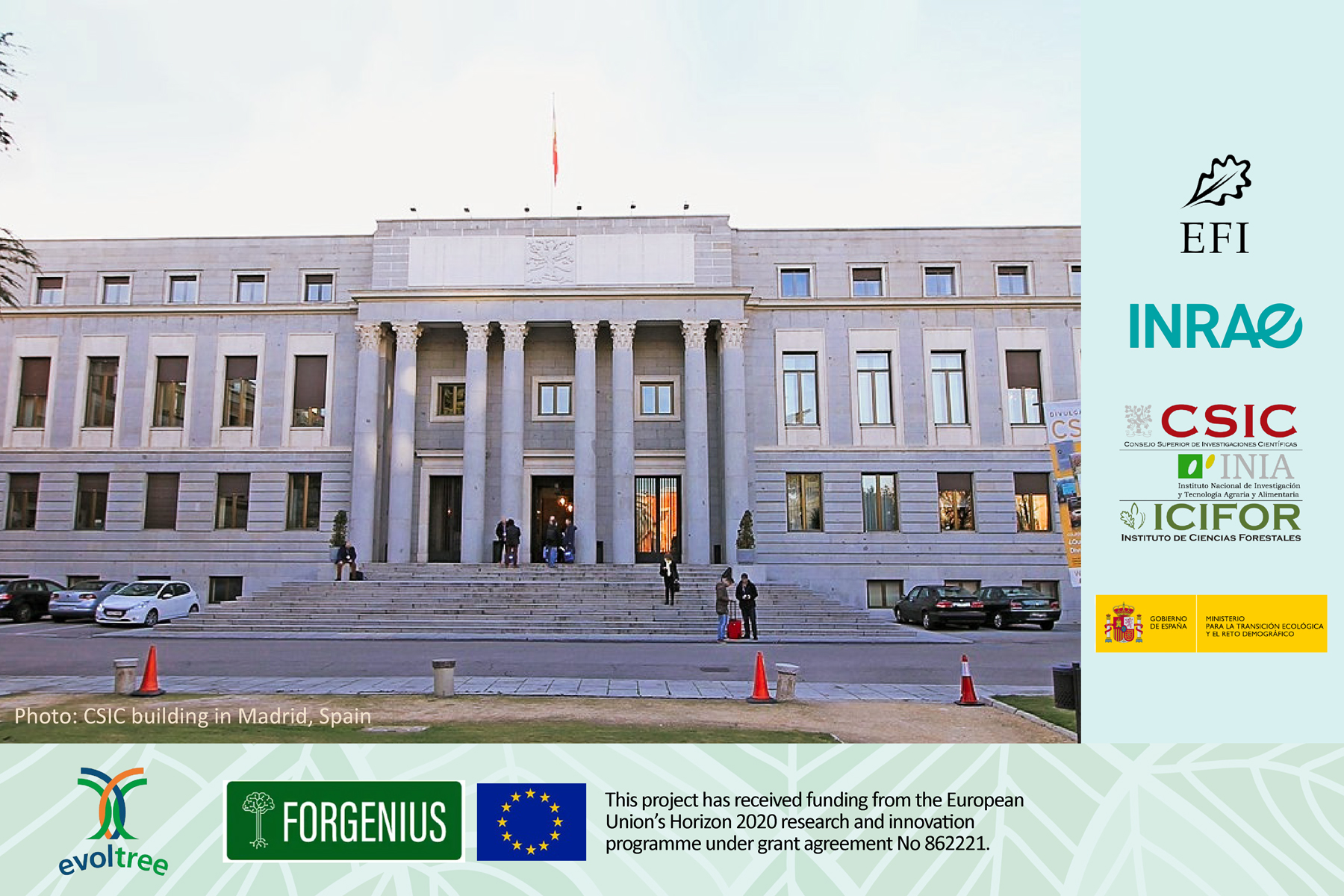Can genetic diversity save ash forests?
You may have heard of ash dieback, a disease caused by the fungus Chalara fraxinea. This disease has been ravaging forests of common ash (Fraxinus excelsior) across Europe for more than 10 years now. The first symptoms of the disease were discovered in Poland in the early 1990’s and it has now become widespread throughout Europe.
You may have heard of ash dieback, a disease caused by the fungus Chalara fraxinea. This disease has been ravaging forests of common ash (Fraxinus excelsior) across Europe for more than 10 years now. The first symptoms of the disease were discovered in Poland in the early 1990’s and it has now become widespread throughout Europe. The symptoms include severe defoliation, wilting, bark necroses on stems and discolouration of the wood. Ash trees of all sizes (adult trees, saplings and seedlings) are affected by this disease, both in forests and urban areas, and it leads to tree death in most cases. The situation is dire in many European countries with up to 80-90 per cent of ash trees affected so far. The disease has been observed to spread up to 20-30 kilometres per annum. In addition to spores, the disease can also spread via plant material and subsequently it has been placed on the alert list of EPPO [1].
In 2012, ash dieback reportedly reached a new country, the United Kingdom. It has made many headlines in the country and even prompted the UK Government to take action against it to respond to increasing public concern on the fate of ash trees [2,3]. On 12 Dec 2012, BBC Radio 4 also broadcasted a special 28-minute programme on ash dieback, including interviews of experts from the UK and other European countries [4].
While ash trees are dying in large numbers across Europe, what can be done? Is the species doomed to extinction? A recent study by Danish scientists [5], published in Heredity, offers some answers. The symptoms of ash dieback were first observed in Denmark in 2003 and today, the disease affects ash populations in all parts of the country. The study focused on screening the presence of possible natural genetic resistance among Danish ash populations to the disease by analyzing a group of 40 genotypes (clones) which have been growing in field trials at two different locations since 1998. The Danish scientists found out that there is a large variation in susceptibility to the fungus infections among the trees studied. No trees were entirely free from symptoms but some of them exhibited low level of damage. The scientists concluded that some trees seem to be able to limit the spread of infections by mechanism of partial resistance. Unfortunately, they also noted that the number of ash genotypes with partial resistance is likely to be too low to prevent the collapse of local populations in most natural or managed ash forests.
These results provide some good news for common ash as a species, i.e. it is unlikely to become extinct as some individual trees are expected to survive. However, the outlook for forestry and biodiversity conservation in ash-dominated forests is very bleak in many countries. The disease can wipe out years of efforts and investments in growing or conserving ash forests. Furthermore, it is likely to continue causing severe damages for several years or even decades especially at the local level.
The recovery of ash forests in Europe depends on many factors and it is difficult to give any specific recommendations on how the infected forests should be managed that could be applied for all sites and situations across Europe. However, one general recommendation can be given to forest owners and managers; don’t cut down those ash trees which have survived the outbreak of the disease even if you plan to reforest the area with other tree species. Every survived tree is extremely valuable for tree breeding, reforestation efforts and genetic conservation. These trees may also provide financial benefits for forest owners (or countries, depending on national legislation) in the future (cf. the Nagoya Protocol).
From the genetic conservation point of view, the next question is how many ash trees will survive in conservation populations after they have become infected by the disease. According to the EUFGIS Portal, there are a total of 87 conservation populations of common ash in 15 countries. These populations are managed based on the dynamic conservation approach to maintain evolutionary processes within tree populations and their adaptive potential across generations. No systematic survey has yet been carried out to assess how many of these units are already suffering from ash dieback but many units are already infected and damaged. Unlike other plant species, most forest trees, including common ash, have large genetic variation within populations rather than among populations. This large genetic diversity increases the likelihood that some ash trees will survive and continue their evolutionary processes even after experiencing strong selection, such as ash dieback.
There are 27 European countries within the distribution range of common ash which have no genetic conservation units for the species but which most likely also harbour genotypes with partial resistance to the disease. This means that, while the disease is continuing to ravage ash forests, there are still large gaps in genetic conservation of common ash in Europe. Urgent action is needed in these countries to conserve valuable genetic resources of common ash for the future.
Links & references:
[1] <link https: www.eppo.int quarantine alert_list deletions.htm _blank external-link-new-window external link in new>European and Mediterranean Plant Protection Organization (EPPO)
[2] Nature News
[3] UK Forest Commission
[4] Learn more and listen a BBC radio programme on the ash dieback disease (“The Tree Scientists”) and other broadcasts on trees
[5] McKinney, L.V.,Nielsen, L.R., Hansen, J.K. & Kjaer, E.D. 2011. Presence of natural genetic resistance in Fraxinus excelsior (Oleraceae) to Chalara fraxinea (Ascomycota): an emerging infectious disease. Heredity 106: 788–797. [Free access]
Related News
Related Links
- [1] European and Mediterranean Plant Protection Organization (EPPO)
- [2] Nature News
- [3] UK Forest Commission
- [4] The Tree Scientists Learn more and listen a BBC radio programme on the ash dieback disease (“The Tree Scientists”) and other broadcasts on trees
- [5] McKinney, L.V.,Nielsen, L.R., Hansen, J.K. & Kjaer, E.D. 2011. Presence of natural genetic resistance in Fraxinus excelsior (Oleraceae) to Chalara fraxinea (Ascomycota): an emerging infectious disease. Heredity 106: 788–797. [Free access]










